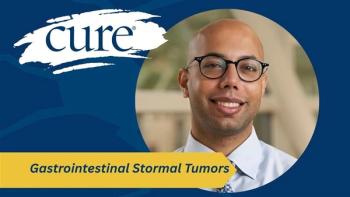
Poliovirus Extends Survival for Patients With Glioblastoma in Early-Phase Trial
Researchers from Duke Cancer Institute in Durham, North Carolina, developed a genetically modified poliovirus to attack the rare but aggressive brain cancer by directly injecting the virus into the tumor.
Patients with recurrent glioblastoma (GBM) may have new found hope in an unlikely source: a killer virus from the past.
Researchers from Duke Cancer Institute in Durham, North Carolina, developed a genetically modified poliovirus to attack the rare but aggressive brain cancer by directly injecting the virus into the tumor.
In a phase 1 clinical trial, patients showed a three-year survival rate of 21 percent compared with just 4 percent of patients given standard therapy in a historical control group, according to study findings published in the New England Journal of Medicine.
“Patients with glioblastoma have failed to respond to immunotherapy drugs available for other cancer types, (so) it is exciting to know that the genetically modified poliovirus was able to trigger an immune reaction in (these) patients,” Annick Desjardins, M.D., FRCPC, director of clinical research at The Preston Robert Tisch Brain Tumor Center at Duke, said in an interview with CURE.
The trial, which launched in 2012, was made up of 61 patients who were enrolled based on the size of their recurring tumor and its location in the brain. Investigators then compared them with patients from historical cases at Duke.
The median overall survival (OS) was 12.5 months compared with 11.3 months for the historical control group. At two years, patients treated with the poliovirus had an OS of 21 percent, whereas the historical control group only saw an OS of 14 percent.
“The survival observed is similar to other tumors treated with immunotherapy, but quite exciting for recurrent patients with glioblastoma, given their known poor survival,” Desjardins said.
Investigators planned to increase the dosage in all patients; however, the 15 patients who received higher doses experienced too much inflammation that resulted in side effects like seizures and cognitive disturbances.
Sixty-nine percent of patients had a mild or moderate side effect occur. “The activation of the immune response triggers a localized inflammation, or immune reaction,” she said. “The side effects were in relation to the brain function in proximity to the tumor injected with the genetically modified poliovirus. For example, if the lesion was close to the speech center, the side effect would be word-finding difficulties.”
GBMs are the fastest growing type of brain cancer and make up more than half of all gliomas, according to the American Cancer Society. Men are more prone to developing GBM than women.
Typically, GBM is treated by removing as much of the tumor as possible with surgery. Radiation and chemotherapy can be used following surgery to help kill any remaining tumor cells, or as main treatment if the tumor cannot be removed surgically. Once GBM recurs, the survival rate is often limited to less than one year.
Brain cancers are difficult to treat because of the blood-brain barrier, which helps prevent harmful toxins and bacteria from entering; however, that also means anticancer drugs may be blocked too. The poliovirus is ideal in treating recurrent GBM for several reasons, explained Desjardins.
“The poliovirus receptor is present on all solid tumors, which means that all solid tumors will get infected by the genetically modified poliovirus if put in contact with it,” she said. “Another positive is that the poliovirus survives for only a short period of time: It triggers the infection and the immune activation, but then disappears. It does not stay around and decrease the long term immune response like other viruses might do.”
In May 2016, the Food and Drug Administration (FDA) granted breakthrough therapy designation to the genetically modified poliovirus, PVSRIPO, which will hopefully help expedite research into this line of therapy.
For this study, the phase 2 trial is ongoing in adults with recurrent glioblastoma and a phase 2 trial is open for pediatric patients with a recurrent brain tumor. Investigators plan to soon begin trials in patients with melanoma and breast cancer.
“It is hard work to retrain the part of the brain affected by the inflammation, and not all patients can safely receive the treatment given the location of their tumor,” Desjardins said.
“However, for the patients who can safely receive the drug, a group will see their disease controlled for a long period of time,” she added. “This is just the beginning of our understanding on how to activate the immune system for patients with brain tumors.”





